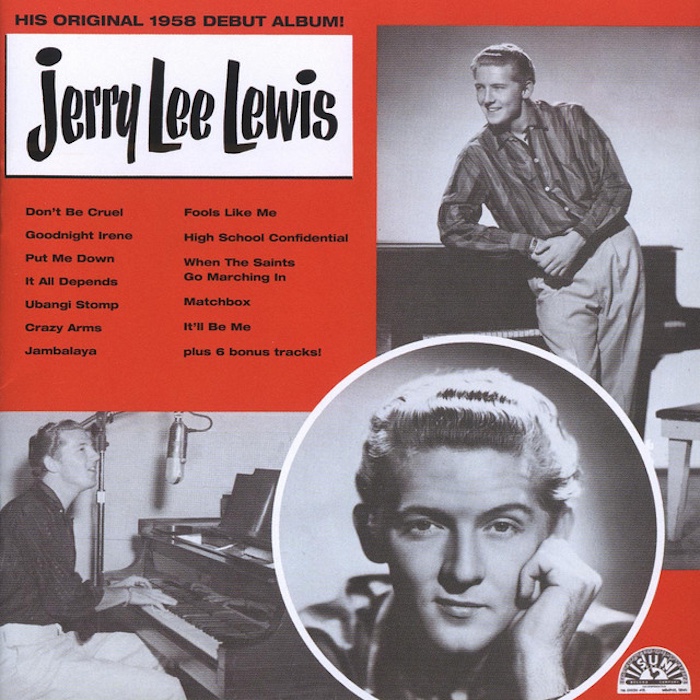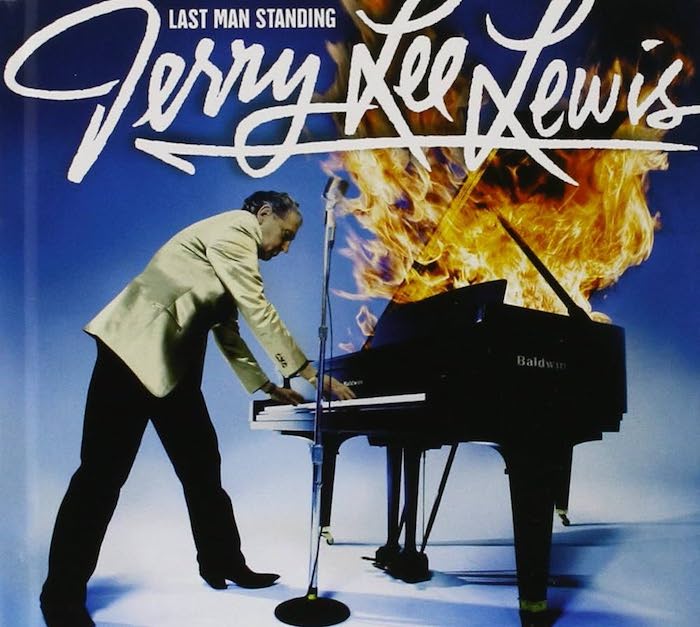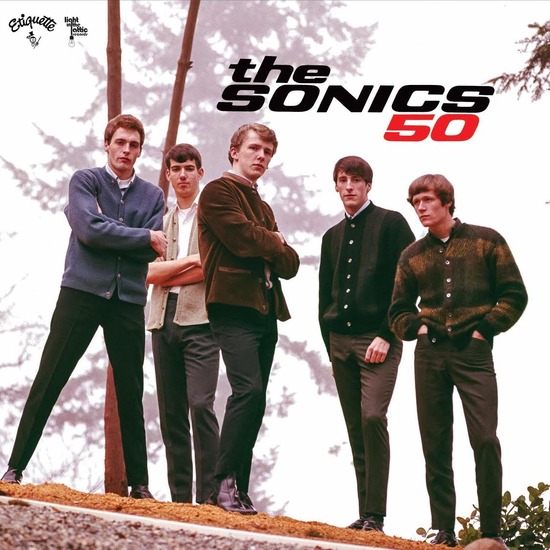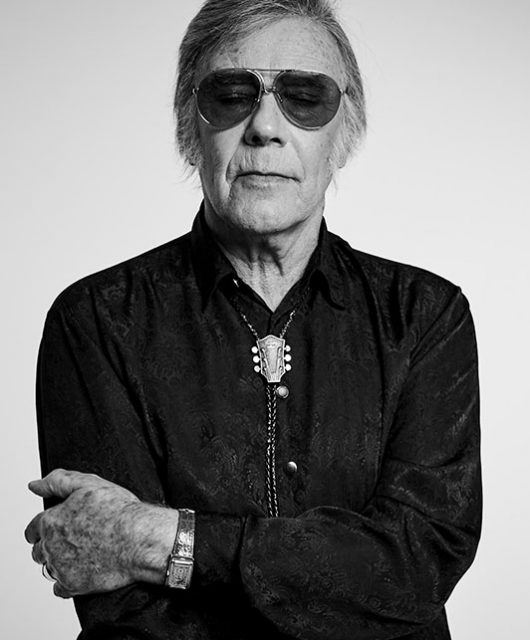In celebration of the life of Jerry Lee Lewis, we look back at the thrilling rise of one of rock’n’roll’s most volatile originals
It’s inevitable that the life choices of a 22-year-old Killer will always cause raised eyebrows, but there’s also no doubting his ferocious and fearless piano playin’ will forever get hearts pumpin’. More than sixty five years since he first whipped up a storm in both the British singles chart and the tabloid press, the controversial whirling dervish Jerry Lee Lewis will always be rock’n’roll’s first great wild man.
Ferriday Fireball
Born into a poor but devoutly religious family, in Ferriday, Louisiana, Lewis became infatuated by the piano at the tender age of nine while visiting his aunt. When his parents mortgaged their farm to buy a used upright piano, the young Lewis started taking lessons and played alongside his cousins Mickey Gilley (who’d go on to find fame as a country music artist), and future US TV evangelist Jimmy Swaggart.
Fascinated by the skills of older cousin Carl McVoy, who had developed a boogie woogie-style of playing, Lewis spent the summer of 1945 with him in Pine Bluff, Arkansas, and returned six months later with, as Swaggart would state, “more piano skills than the stodgy teacher could have drilled into him in a lifetime.”
At the legendary Sun Studios in Memphis, McVoy would go on to record You Are My Sunshine, the debut single release for the Hi Records label, and later joined The Bill Black Combo. However, his handiwork would be overshadowed by the exploits of the precocious young talent whose skills he helped nurture.
Bags Of Bravado
With dreams of eclipsing the success of Elvis Presley, 21-year-old Lewis left his hometown for Tennessee a twice-married, Southwest Bible Institute dropout with nothing but bags of bravado and an unbelievable ability to bang on the piano.
Initially turned down by the Grand Ole Opry and having had a Nashville recording executive suggest that he switch to the more fashionable guitar – to which the irascible youngster reportedly suggested they took said six-string and stick it where the sun doesn’t shine – Lewis headed south-west for an audition with Sun.
While Sam Phillips was away in Florida, producer and engineer Jack Clement was working the control room with Roy Orbison, when office assistant Sally Wilbourn interrupted the session claiming, “there’s a guy here who says he plays the piano like Chet Atkins”. On hearing such a boast, Clement surrendered studio time to the mysterious braggart.
Sun Star
Suitably impressed by renditions of country numbers Wildwood Flower, Seasons Of My Heart and Window Up Above, Lewis was invited to cut an acetate. When he first heard the rocking rendition of Ray Price’s country hit Crazy Arms, Phillips exclaimed, “where did this man come from?”
Well, you could say he hailed from somewhere situated on the highway between Heaven and Hell. In a heated soundbite, captured during a break during recording, Phillips and his tormented new signing can be heard arguing theology. It is evident that Lewis, a man raised with the threat of hellfire and damnation, was torn by his predicament and one can’t really tell if he feared eternal punishment for playing such hellraising music, or if the Devil – which raged inside him – only helped stoke the flames for the trail that he blazed.
“I was just blown away,” Phillips recalled in 1998. “The guy was different… The expression, the way he played that piano and how you could just feel that evangelical thing about him.”
Having sold 300,000 copies of Crazy Arms in 1956 – the year Elvis scored his first Billboard Top 100 No.1 with Heartbreak Hotel for his new label RCA – Sam Phillips transferred all his attention on to his troubled new protégé… the Devil be damned.
The Wild One
Following recording sessions for Carl Perkins and Johnny Cash, Lewis supported the duo on tour and fully embraced his ‘mad, bad, and dangerous to know’ stage persona. With a shock of wild wavy blond hair, Jerry Lee mesmerised fans with his flamboyant attitude and brazened showmanship: standing on top of the piano, bashing it with his feet and arms, and even setting it on fire.
A cover of Big Maybelle’s 1955 release, Whole Lotta Shakin’ Goin’ On, had become a permanent fixture in his stimulating set and, once it received a complete boogie-woogie makeover in the studio, even Phillips feared if might prove too risqué for a God-fearing public. However, despite its suggestive overtones, Whole Lotta Shakin’ thrust itself to No.3 on the Billboard chart. Entering the UK hit parade at No.29 on 3 October 1957, the single would go on to pierce the Top 10 four weeks later and peak at No.8.
All Shook Up
The touch paper had most certainly been lit and Lewis was set to explode with his next incendiary single. When songwriter Otis Blackwell had been invited by Paul Case at Hill & Range to become musical director on the upcoming film Jamboree (aka Disc Jockey Jamboree in the UK), a Dick Clark vehicle to rival the rock’n’roll movies of Alan Freed, a host of rock acts had already been lined up to appear.
After hearing Whole Lotta Shakin’ Going On, Blackwell suggested that Lewis joined the likes of Carl Perkins, Fats Domino, Buddy Knox, Charlie Gracie and Connie Francis on the bill. Teaming up with fellow songwriter Jack Hammer, Blackwell penned Great Balls Of Fire for rock’s hottest property and a Sun session was swiftly arranged. Featuring bassist Sidney Stokes and drummer Larry Linn, Great Balls Of Fire burst into the UK singles chart at No.12 in December 1957 and would climb to the top four weeks later.
Hot on the heels of securing his debut No.1, another Blackwell composition, Breathless, followed suit and dropped into the Top 10 on 1 May 1958. Anticipation for the inflammable star’s imminent arrival on UK shores for a 37-date tour could not have been much higher. However, things would dramatically implode almost immediately on touchdown at Heathrow.

Rise & Fall
When Lewis landed in London with his third wife in tow, all hell broke loose among the British press on discovering that Myra Gale was only 13 years old when they married… and his first cousin once removed. The scandal became front-page news, and the tour was cancelled after just three shows.
The furore followed him back home when it was also revealed it may have been a bigamous marriage as he hadn’t yet divorced his second wife, whom he’d married aged 17.
Blacklisted from the radio waves, public appearances scrapped, and record sales suffering, Lewis was forced out of the limelight for a couple of years and took gigs for a fraction of the price that he had previously commanded.
With Perkins and Cash following Presley by moving away from Sun, it’s fair to say 1958 was not the brightest of years for the label. However, in September 1960 Sam Phillips opened a state-of-the-art studio at 639 Madison Avenue in Memphis, and Lewis would be the first to record there with a cover of Ray Charles’ R&B classic What’d I Say. Entering the UK chart on 10 May 1961, the single reached No.10 and proved to be his first notable release since Lovin’ Up A Storm had broken the Top 30 in 1959. Riding a wave of renewed interest Lewis returned to a Britain buoyed by the rock’n’roll success of homegrown acts like The Beatles in 1962 and received a much warmer welcome from fans desperate to see one of the original pioneers.
Turning Country
As his contract with Sun came to an end, Lewis changed gear and shifted towards country music. In the US it proved a rather fruitful move, with the 1968 Top 5 country hit Another Place, Another Time, from the Smash label album of the same name, kickstarting a run of success in the country charts which lasted well into the 70s and included three No.1s: There Must Be More To Love Than This, Me And Bobby McGee / Would You Take Another Chance On Me, and a boogie-woogie cover of The Big Bopper’s Chantilly Lace.
“The only time I saw him slip up was when I was touring with him in the late 70s and early 80s,” recalls Matchbox’s Graham Fenton. “He decided to come over here and not play any rock’n’roll – just the country stuff. The crowd turned very quickly, and he was greeted with boos… but what can I say, he still had this air of ‘I’m Jerry Lee, you can either like it or lump it.’
“Jerry Lee was, of course, one of the US legends who performed at the 1972 London Rock & Roll Show at Wembley Stadium which I opened with my band, The Houseshakers. He was only about 37 or 38 then, but was just as flamboyant as you’d imagine. He wasn’t nasty, rude, or horrible… just a bit flash and such a great performer. When I think about his talents, I do believe Jerry Lee was blessed with a God-given gift for playing the piano. As for his flamboyancy, well, I’d say that probably came from the Devil!”

Feeling At Home
In 2022, 36 years after his entry as part of the inaugural class of the Rock And Roll Hall Of Fame, Lewis was inducted into the Country Music Hall Of Fame. While he wasn’t able to make it to the October ceremony, some of country music’s biggest names still embraced the star. Lee Ann Womack performed Middle Age Crazy and Chris Isaak played Great Balls Of Fire, while the McCrary Sisters sang My God Is Real alongside pianist Kevin McKendree. Hank Williams Jr. presented fellow Hall of Fame member Kris Kristofferson with Jerry Lee’s medallion and delivered a letter written by Lewis: “For over 60 years singing music professionally, country has always been the genre where I felt the most at home. I’m honoured to be going into that Hall of Fame rotunda with some of my heroes.”
Jerry Lee’s colourful life and breathless dalliance with the fame game proved anything but straightforward.
Even the reporting of his death was a bewildering affair with his representative initially calling “bulls***!” after the TMZ website erroneously claimed that he had passed away two days before the sad news broke that Lewis had, indeed, died.
Unapologetically Jerry Lee
“I would have to be at least dead or 5,000 years old to do all the things they say I have done,” Lewis wrote in his 1993 biography Killer! The Life & Times Of Jerry Lee Lewis. “I am what I am, I’ve always said what I’ve wanted to say, done what I wanted to do and been what I wanted to be. I’ve never tried to hide anything, everything I’ve done has been out in the open. If people don’t like that then that’s their problem.”
While time might’ve tempered Jerry Lee’s unpredictable nature towards the end of his life, he remained, unapologetically, Jerry Lee Lewis. He could never be accused of fakin’ and rest assured, there will still be a whole lotta shakin’ goin’ on to his music now that the last man is, sadly, no longer standing.
Visit the Jerry Lee Lewis website here
Did you enjoy this article? Check out When rockabilly shook the world






